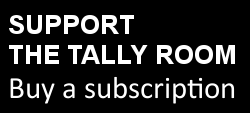With the NSW Labor government on track for a massive defeat, I thought I’d look into the history of massive landslide defeats in Westminster system countries. Most of the examples I found came from Canada, mainly from provincial elections, along with a few other notable examples. The Queensland elections of 1974 and 1983, the South Australian election of 1993, the 2002 New Zealand election, and elections in the Canadian provinces of Quebec, Alberta, British Columbia, Prince Edward Island and Newfoundland.
There is one example, that stands out from all others, which was the 1993 Canadian federal election, which saw the quick and painful death of a political party with over a hundred years of history.
Brian Mulroney had led the Progressive Conservative (PC) federal government from 1984 until early 1993. He had won a landslide victory in 1984, and was re-elected with a smaller majority in 1988. The government’s popularity collapsed in its second term, and its position worsened in the recession of the early 1990s. Mulroney retired in June 1993 and was succeeded by Canada’s first female Prime Minister, Kim Campbell. She led the government into the federal election in October 1993.
The election was an extreme result, with a majority of Canadian voters changing their vote compared to 1988. The PCs were assaulted on all sides, losing ground to the separatist Bloc Québécois, the opposition Liberals, and the right-wing Reform party. Reform had been formed as a conservative party with its base in the western provinces, promoting decentralisation and attacking the PC government from the right. The Bloc Québécois was formed in 1991 with the defection of a number of Liberal and Progressive Conservative federal MPs from Quebec, committed to sovereignty for Quebec.
At the 1993 election, the Progressive Conservatives collapsed, falling from 169 seats in 1988 to only two. Only one cabinet minister survived the election. While the party had been polling in the mid-30s six weeks out from the election, by election day this had plummeted to 16%.
The Liberal opposition increased its seats from 83 to 177, giving them a solid majority. Both the Bloc Québécois and Reform won their first seats at a general election, with the Bloc winning 54 seats and Reform winning 52. The Bloc became the official opposition, despite only running in one province. The left-wing New Democratic Party also collapsed, falling from 43 to 9. The 1988 election had been their best, but 1993 turned into their worst. They still won more seats than the PCs, despite polling substantially less.
The Progressive Conservatives never recovered from this devastating loss. They won 20 seats in 1997, but again fell to 12 in 2000.
The PCs merged with the Canadian Alliance, the successor to Reform, in 2003 to form the Conservative Party of Canada. The party is dominated by those aligned with Reform.
Meanwhile the New Democrats recovered their strength, and the Bloc today continue to hold a large majority of federal seats in Quebec. With the continued strength of these two parties, it has become incredibly difficult for either major party to form a stable majority government, despite Canada’s majoritarian electoral system.
